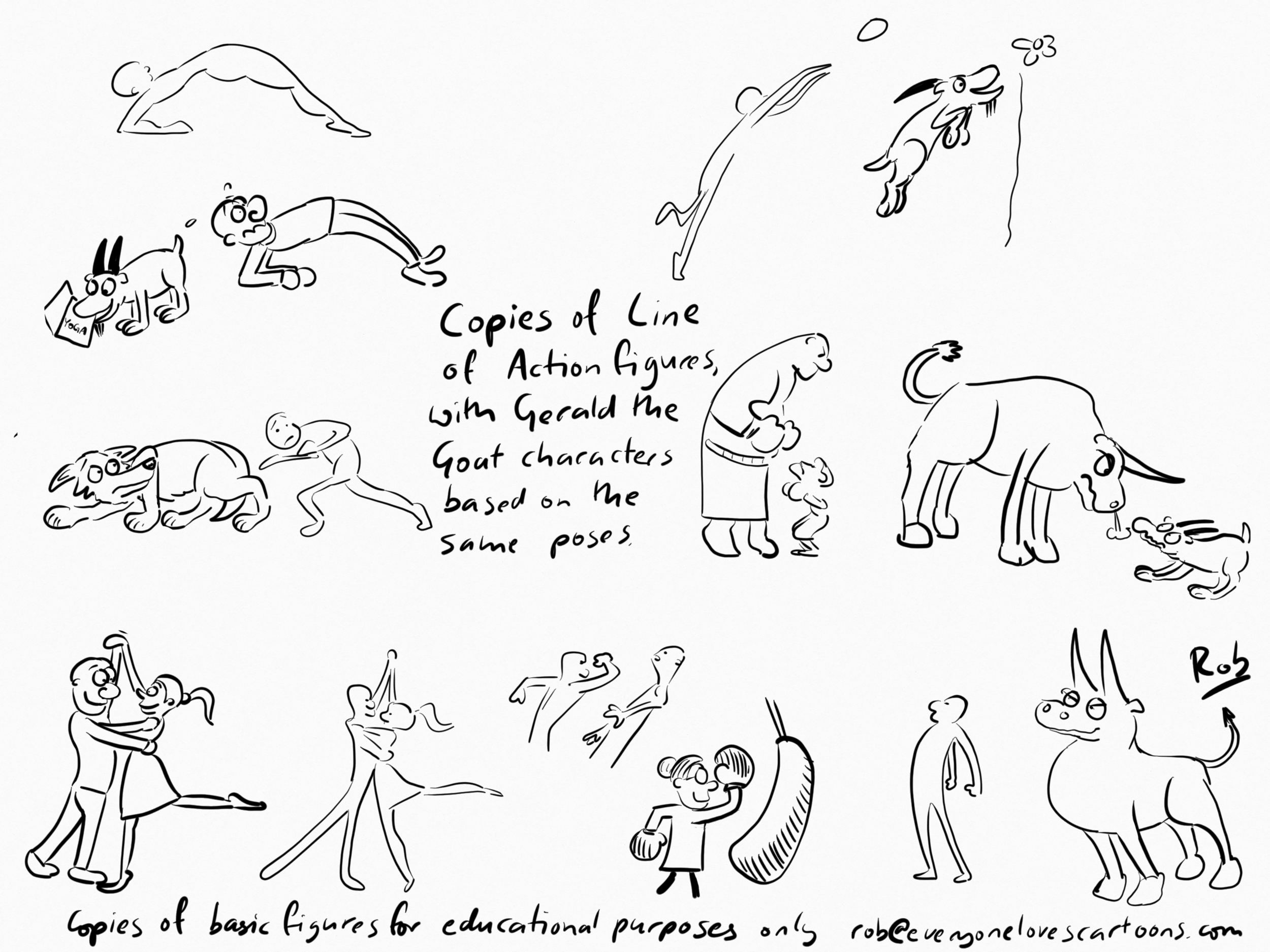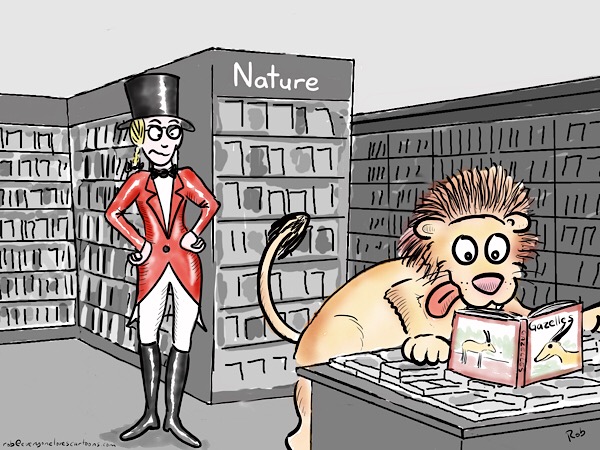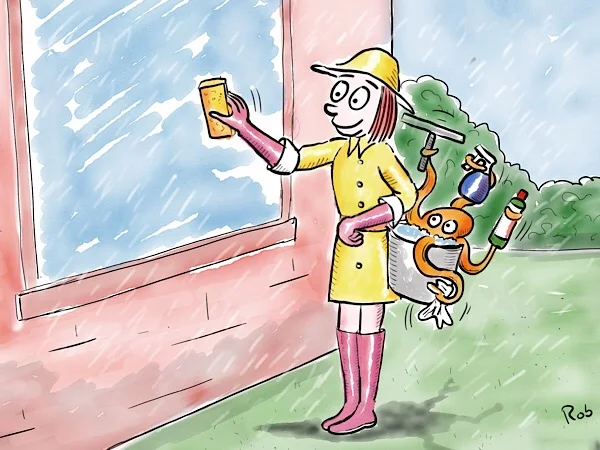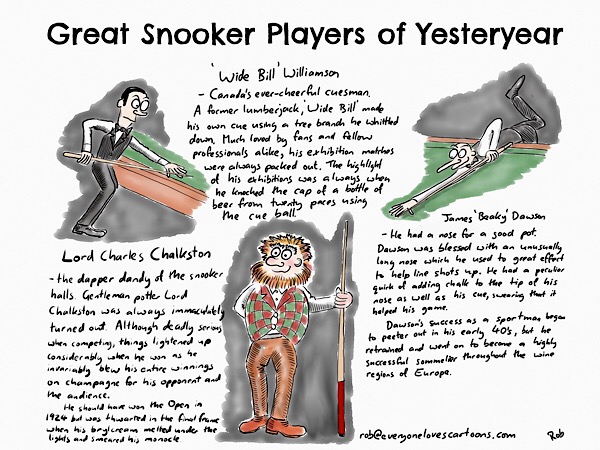In this new series I can going to look over some previous cartoons and find three things I can fix or change that would make for an even better cartoon.

In this new series I can going to look over some previous cartoons and find three things I can fix or change that would make for an even better cartoon.


In this new series I can going to look over some previous cartoons and find three things I can fix or change that would make for an even better cartoon.


In this new series I can going to look over some previous cartoons and find three things I can fix or change that would make for an even better cartoon.



This is an illustration of Sally Squeegees attempt on the long-standing dishwashing reord set by Earl "Big Sponge" Johnston way back in 1974. Johnston's tally of three hundred and fifty nine dishes, thirty two pans, and two hundred assorted pieces of cutlery has resisted several previous attempts. For Squeegee's attempt, Johnston sportingly supplied a teaspoon, bring the cutlery total to two hundred and one, and thus enabling the new record attempt to go ahead.
Sally was assisted by her faithful helper, Floyd the octopus, who kept the sink topped up with washing-up liquid, and passed the dishes to and fro.
Dash the Spaniel also wanted to assist, but had to be retrieved from the sink by Floyd as he was getting in the way.
The attempt was officiated by former Russian champion power-washer Boris Splasski.
Two seconds before the passing of the hour, Sally was able to wash the remaining piece and thus set a new record.

Introducing...The Red Cat


Taking the pet for a slither.

I thought I'd try a new version of the pic in a more dynamic pose.




A picture I drew to practice getting a little more movement into my characters.
I revised the pictures featured In the story.

The Snorkeling Schnauzer is one of the most powerful swimmers on the canine world, it is also a good diver, capable of reaching depths of 30m and able to hold its breath for up to five minutes.
This most specialized of Schnauzers was bred by the Austro-Hungarian navy to help rescue submariners in peril. The dogs were trained to work either individually or with divers, and their capacity for hard work and tireless courage were respected far beyond the reaches of the Austro-Hungarian empire.
Careful selective breeding gradually extended the length of the muzzle, until the dogs were able to swim fully underwater, using their unique doggy snorkels. Due to their size, the dogs were never carried on the submarines that they helped service, but they were taken to sea onboard regular warships, as well as being kennelled in ports. The dogs skill and bravery helped many submariners and sailors, even those of rival nations, as the dogs weren't trained to differentiate between friend and foe.
With the end of the First World War and the collapse of the Austrian-Hungarian Empire, the Snorkeling Schnauzer breeding program came to an end and it was left to enthusiasts to maintain the breed. The end of hostilities did result in the breed extending its reach beyond the confines of Austro-Hungary, and it soon began appearing in Western Europe and then later North America.

The breed later became popular with caving enthusiasts as its unique attributes lent themselves well to the subterranean world. It was because of this association with caving that the breed came to the attention of noted independent naturalist Lionel Peabody. Peabody was carrying out an expedition to see whether there was any truth to the reports of alligators in the sewer system of New York. For years there has been reports of sightings and much speculation as to what might be lurking in the tunnels beneath the streets, but no one was really sure whether there was anything to it or if it was simply an urban myth.

Peabody thought that a Snorkeling Schnauzer would be the ideal companion during his search, and so ended up borrowing Zoltan, a fine representative of the breed, from a friend of his. Peabody's pet honey badger, Reggie, initially disapproved and it was not until Reggie was rescued by Zoltan that he had cause to change his mind.

Peabody remained tight-slipped over whether he actually managed to find any alligators, rumor has it that he did indeed find some of the reptiles but as they were doing no harm, decided to leave them where they were. Zoltan, inspired by the experience went on to work with another noted naturalist, Hans Von Algae - Europe’s finest pond dipper. Zoltan accompanied Von Algae on many successful dips and was the co-discoverer of the many-legged purple swimming centipede.

A quick update to the recent 'Slush Leopards pic to make it a little more dynamic.

The Snorkeling Schnauzer is one of the most powerful swimmers on the canine world, it is also a good diver, capable of reaching depths of 30m and able to hold its breath for up to five minutes.
This most specialized of Schnauzers was bred by the Austro-Hungarian navy to help rescue submariners in peril. The dogs were trained to work either individually or with divers, and their capacity for hard work and tireless courage were respected far beyond the reaches of the Austro-Hungarian empire.
Careful selective breeding gradually extended the length of the muzzle, until the dogs were able to swim fully underwater, using their unique doggy snorkels. Due to their size, the dogs were never carried on the submarines that they helped service, but they were taken to sea onboard regular warships, as well as being kennelled in ports. The dogs skill and bravery helped many submariners and sailors, even those of rival nations, as the dogs weren't trained to differentiate between friend and foe.
With the end of the First World War and the collapse of the Austrian-Hungarian Empire, the Snorkeling Schnauzer breeding program came to an end and it was left to enthusiasts to maintain the breed. The end of hostilities did result in the breed extending its reach beyond the confines of Austro-Hungary, and it soon began appearing in Western Europe and then later North America

The breed later became popular with caving enthusiasts as its unique attributes lent themselves well to the subterranean world. It was because of this association with caving that the breed came to the attention of noted independent naturalist Lionel Peabody. Peabody was carrying out an expedition to see whether there was any truth to the reports of alligators in the sewer system of New York. For years there has been reports of sightings and much speculation as to what might be lurking in the tunnels beneath the streets, but no one was really sure whether there was anything to it or if it was simply an urban myth.

Peabody thought that a Snorkeling Schnauzer would be the ideal companion during his search, and so ended up borrowing Zoltan, a fine representative of the breed, from a friend of his. Peabody's pet honey badger, Reggie, initially disapproved and it was not until Reggie was rescued by Zoltan that he had cause to change his mind.

Peabody remained tight-slipped over whether he actually managed to find any alligators, rumor has it that he did indeed find some of the reptiles but as they were doing no harm, decided to leave them where they were. Zoltan, inspired by the experience went on to work with another noted naturalist, Hans Von Algae - Europe’s finest pond dipper. Zoltan accompanied Von Algae on many successful dips and was the co-discoverer of the many-legged purple swimming centipede.

A revised version of the cartoon from a couple of days before.

Everyone has heard of the rare and elusive snow leopard, but almost no one heard of the even rarer and more elusive slush leopard.
As beautiful as it's more well-known cousin, the slush leopard is smaller in stature while retaining similar markings.
Completely comfortable in the most frigid and wet of conditions, these leopards can be found in small pockets in remote areas in Eurasia and even in North America. It was previously thought that there were no leopards naturally found in North America, which just goes to so show how secretive these cats really are. Due to human encroachment on their natural habitat they have even been known to enter urban areas relying on their stealthiness to remain unnoticed.
This particular individual was observed lurking in the large slush puddles that New York becomes notorious for during the winter. Choosing the deepest of puddles that even a person with the tallest of boots dare not risk stepping into, the leopard floats patiently, partially covered by slush and newly fallen snow, waiting.
Finally the patience is rewarded when a passing pedestrian leaps over the puddle, accidentally dislodging from her shopping bag a pastrami on rye sandwich, which is pounced upon moments later.


To enable shorter-legged breeds to cope with snowy conditions.